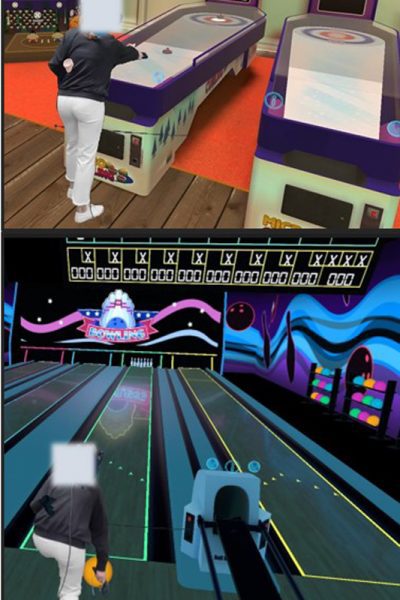Virtual reality and education for low back pain
Combining education and virtual reality (VR) gameplay using a cognitive behaviour therapy approach improves pain and pain-related fear of movement.

VR gameplay
Low back pain affects the lives of many Australians, with some experiencing persistent pain and a limit to their daily activity. Those with persistent pain consistently report a reduced quality of life and higher rates of anxiety and depression. They also often suffer from kinesiophobia, a fear of movement due to the concern that it will result in pain.
Cognitive behaviour therapy (CBT) has been used as a drug-free treatment for persistent pain by helping people change their thoughts and responses towards their pain. The study evaluated the effect of VR-CBT, a novel CBT-informed approach, combining pain education with virtual reality exposure therapy, on pain intensity and kinesiophobia in 34 individuals with persistent low back pain.
The study was a collaboration between Royal Brisbane and Women’s Hospital (RBWH), the Surgical, Treatment and Rehabilitation Service (STARS) Education and Research Alliance (SERA), The University of Queensland’s RECOVER Injury Research Centre, Griffith University, and the Tess Cramond Pain and Research Centre.
RBWH physiotherapist and lead investigator Dr Peter Window explains how the current study differs from previous work in this area.
“While virtual reality and pain education have already been used separately for chronic low back pain, there has been no research to assess the effect of these two techniques used together. This study addresses this gap,” Peter said.
Participants received a pain education session delivered by an experienced physiotherapist about how their pain is produced, reconceptualising movement as safe, and how to gradually increase activity and strategies to avoid pain flare ups.
The virtual reality component consisted of participants moving through a virtual arcade, playing basketball hoops, puck slides, and ten-pin bowling that provided progressive exposure to increased movement. Participants were filmed while using the virtual reality and had their movements recorded via 3D motion capture. The video was then played back to participants as part of a reflective interview to highlight elements of the pain education such as the impact of distraction, context and mood on the pain experience.
The study found that participants benefitted from the combined therapeutic approach.
“Pain education combined with a novel VR exposure therapy intervention improved pain, pain-related fear of movement and trunk kinematics,” Dr Window said.
“Further research is needed to explore the benefit of increased VR-CBT dosage and the mechanisms for the underlying improvements.”
Combining pain education with VR exposure therapy using a CBT approach shows great potential in providing a cost effective, drug-free treatment for persistent low back pain.
“There is the possibility of these treatments taking place in an individual’s home, acting as a primer for patients on waiting list to commence treatment, or facilitating increased accessibility for patients who live in regional Queensland or who face challenges attending face-to-face appointments,” Dr Window said.
